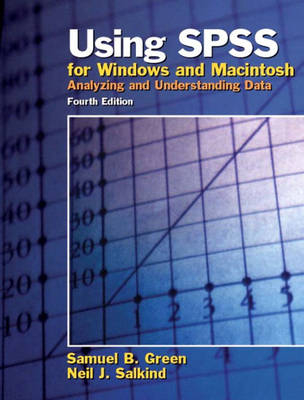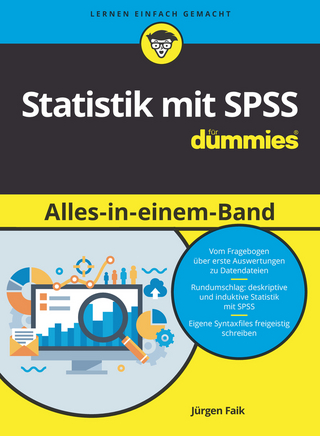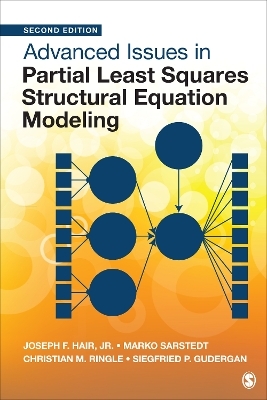
Using SPSS for Windows and Macintosh
Pearson (Verlag)
978-0-13-146597-8 (ISBN)
- Titel ist leider vergriffen;
keine Neuauflage - Artikel merken
For courses in Introductory Statistics and Research Methods in the department of Psychology.
This text for statistics and research method courses is designed to help students learn the basics of SPSS and how to use SPSS to analyze their data, interpret their results, and describe their findings following APA guidelines. It supplies extensive data sets and models to conduct analyses and interpret findings.
I. Introducing SPSS.
1. Getting Started with SPSS.
Starting SPSS. The SPSS Main Menus and Toolbar. Using SPSS Help. A Brief SPSS Tour.
2. Creating and Working with Data Files.
Defining Variables. Entering and Editing Data. Inserting and Deleting Cases and Variables. Selecting, Copying, Cutting, and Pasting Data. Printing and Exiting an SPSS Data File. Exporting and Importing SPSS Data.
3. Working with Data.
Finding Values, Variables, and Cases. Recoding Data and Computing Values. Sorting, Transposing, and Ranking Data. Splitting and Merging Files.
4. Working with SPSS Charts and Output.
Creating an SPSS Chart. Enhancing SPSS Charts. Using the Viewer.
II. WORKING WITH SPSS PROCEDURES.
5. Creating Variables and Computing DescriptiveStatistics.
Creating Variables. Univariate Descriptive Statistics for Qualitative Variables. Univariate Descriptive Statistics for Quantitative Variables.
6. Test Procedures.
One-Sample Test. Paired-Samples Test. Independent-Samples Test.
7. Univariate and Multivariate Analysis-of-Variance Techniques.
One-Way Analysis of Variance. Two-Way Analysis of Variance. One-Way Analysis. One-Way Multivariate Analysis of Variance. One-Way Repeated-Measures Analysis of Variance. Two-Way Repeated-Measures Analysis of Variance.
8. Correlation, Regression, and Discriminant Analysis Procedures.
Pearson Product-Moment Correlation Coefficient. Partial Correlations. Bivariate Linear Regression. Multiple Linear Regression. Discriminant Analysis.
9. Scaling Procedures.
Factor Analysis. Internal Consistency Estimates of Reliability. Item Analysis Using the Reliability Procedure.
10. Nonparametric Procedures.
Binomial Test. One-Sample Chi-Square Test. Two-Way Contingency Table Analysis Using Crosstabs. Two Independent-Samples Tests: The Mann-Whitney U Test. K Independent-Samples Tests: The Kruskal-Wallis and the Median Tests. Two Related-Samples Tests: The McNemar, the Sign, and the Wilcoxon Tests. K Related-Samples Tests: The Friedman and the Cochran Tests.
Appendix A. Data for Crab Scale and Teacher Scale.
Appendix B. Methods for Controlling Type I Error across Multiple Hypothesis Tests.
Appendix C. Selected Answers to Lesson Exercises.
References.
Index.
| Erscheint lt. Verlag | 2.9.2004 |
|---|---|
| Sprache | englisch |
| Maße | 209 x 276 mm |
| Gewicht | 962 g |
| Themenwelt | Mathematik / Informatik ► Mathematik ► Computerprogramme / Computeralgebra |
| ISBN-10 | 0-13-146597-X / 013146597X |
| ISBN-13 | 978-0-13-146597-8 / 9780131465978 |
| Zustand | Neuware |
| Haben Sie eine Frage zum Produkt? |
aus dem Bereich


